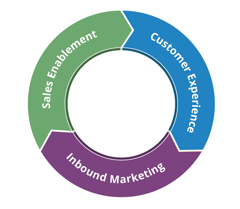Repurposing content is a strategic approach that enables companies to breathe new life into existing information, ensuring it remains relevant and aligned with the ever-evolving current landscape. This process not only revitalizes content but also maximizes its value by adapting it to meet contemporary standards and audience expectations. However, successfully republishing content is not a simple task; it requires a well-thought-out process that involves careful planning and execution. To assist you in this endeavor, we have compiled a comprehensive list of 8 essential tips that will guide you in effectively optimizing your published content, ensuring it resonates with your audience and achieves its intended impact.
1. Make a Selection:
Review traffic statistics, inbound links, social media shares, and other analytics for each article, and identify the top-performing ones. Take a moment to check the publication date and read through the content to see if it aligns with current perspectives. Articles that do not meet these criteria require repurposing.
2. Not Applicable:
Look online for up-to-date topics and trends that can seamlessly integrate into the article. Your writing style may have changed as well, so make sure to incorporate that into the piece. Remove outdated information and include new examples to support updated facts. Add new videos, photos, and audio to reflect the changes. Decide whether to rewrite the entire document or update the existing article.
3. Time and Place:
Every piece of content has its moment, and your material must resonate with the present mindset. Strategies that were effective in 2000 may not be applicable today. Focus on creating content that addresses both current and future topics. Ensure it remains timeless, providing value now and in the years to come. Don't forget to refresh contact details as needed.
4. Demographics:
Examine the demographics to determine if the same audience is still engaging with the page. If they aren't, the article should be updated to appeal to the new audience.
.
5. Meta Description:
The description of over 50 words that appears below links in search engine results must mirror the updated article. Ensure you retain the keywords that contributed to the page's popularity.
6. The Social Network:
Share the updated content on social media platforms to increase visibility, earn quality backlinks, and grow your following. Interact with your social media audience to receive genuine, candid feedback.
7. Analytics:
Analytics remain crucial, even for repurposed content. Ensure that the updated information reaches your audience effectively. Monitor statistics to confirm that traffic, clicks, links, and other metrics are stable or improving compared to the previous version. Make adjustments if they fall below expectations.
8. Consistency:
The core elements, such as the URL, keywords, tags, title, and page location, must remain unchanged. Otherwise, the views and promotional efforts will reset to their original state.
Repurposing content is an invaluable strategy for maintaining the relevance and effectiveness of your digital presence. By carefully selecting and updating your existing materials, you can ensure that your content continues to engage and inform your audience while also adapting to the latest trends and technologies. The process may require effort and attention to detail, but the rewards—enhanced visibility, sustained audience interest, and maximized content value—are well worth it. By following the outlined tips, you can transform your content into a dynamic asset that not only meets but exceeds contemporary standards and expectations.
Questions? We're here to help!


__Square.png?width=250&height=250&name=Marketing_Hub_(1)__Square.png)




.png?width=250&name=diamond-badge-color%20(1).png)
